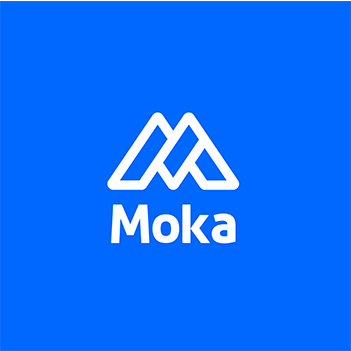7 Tips to Optimize Job Descriptions for Applicant Tracking Systems

Hiring in today’s fast-paced world demands efficiency and precision. An applicant tracking system (ATS) plays a pivotal role in streamlining the recruitment process. It helps you sift through countless applications, ensuring only the most qualified candidates make it to your desk. However, poorly crafted job descriptions can hinder this process, leaving top talent overlooked. By optimizing your job descriptions, you not only attract the right candidates but also save valuable time. In fact, 86% of recruiters report reduced time-to-hire after implementing ATS, proving its impact on modern hiring success.
Key Takeaways
Use relevant keywords strategically to enhance visibility and ensure your job description aligns with ATS requirements.
Craft clear and specific job titles to attract the right candidates and improve ATS ranking.
Format job descriptions for readability by using standard fonts and clear headings, making it easier for ATS to parse the information.
Provide detailed responsibilities and qualifications to help both ATS and candidates understand the role better.
Avoid jargon and buzzwords; use straightforward language to ensure clarity and ATS compatibility.
Regularly update job descriptions to reflect current industry trends and keywords, keeping your postings relevant and effective.
Proofread and test your job descriptions for ATS compatibility to avoid errors that could lead to missed opportunities.
Understanding Applicant Tracking Systems

Applicant tracking systems have revolutionized the hiring process. They act as a bridge between recruiters and candidates, ensuring efficiency and precision in recruitment. To make the most of these systems, you need to understand how they work and why optimizing your job descriptions for them is essential.
The Role of an Applicant Tracking System in Hiring
An applicant tracking system serves as a digital assistant for recruiters. It automates tasks like collecting, organizing, and analyzing resumes. Instead of manually sifting through hundreds of applications, you can rely on an ATS to do the heavy lifting. By scanning resumes for specific keywords and phrases, it identifies candidates who match the job requirements. This saves time and ensures that only the most relevant applications reach your desk.
"The ATS parses a resume's content into categories and scans it for specific and relevant keywords to determine if the job application should be passed along to the recruiter."
This functionality allows you to focus on evaluating top candidates rather than getting bogged down by unqualified ones.
How ATS Filters and Ranks Applications
The filtering and ranking process is where the ATS truly shines. When you input job details—such as the title, responsibilities, and required skills—the system uses this information to create a benchmark. It then compares each resume against this benchmark. Resumes with the most relevant keywords and qualifications score higher and move to the top of the list.
Artificial intelligence plays a significant role here. AI algorithms enhance the ATS by identifying patterns and ranking resumes based on how well they align with the job description. For example, if a job requires "project management" experience, the ATS will prioritize resumes that include this term. This ensures that the best-fit candidates are highlighted for your review.
Why ATS Optimization is Crucial for Job Descriptions
Optimizing your job descriptions for an ATS is no longer optional—it’s a necessity. Without proper optimization, even the most qualified candidates might slip through the cracks. An ATS relies heavily on keywords and clear formatting to process job descriptions effectively. If your descriptions lack these elements, the system may misinterpret or overlook critical information.
By tailoring your job descriptions to align with ATS requirements, you increase the chances of attracting the right talent. Clear, keyword-rich descriptions not only improve the system’s accuracy but also enhance the candidate experience. When applicants see well-structured and detailed job postings, they’re more likely to apply.
In short, an ATS-friendly job description ensures that your hiring process is both efficient and effective. It helps you connect with top talent while saving time and resources.
7 Tips to Optimize Job Descriptions for ATS
Use Relevant Keywords Effectively
Keywords act as the bridge between your job description and the ATS. To ensure your posting gets noticed, you need to focus on keyword optimization. Start by identifying the right keywords that reflect the role’s responsibilities, required skills, and qualifications. These could include specific tools, certifications, or industry terms. For example, if you're hiring for a project manager, terms like "project management," "budgeting," or "team leadership" should appear naturally in your description.
Avoid stuffing your job description with keywords. Overloading it can confuse ATS software and make your posting less appealing to job seekers. Instead, strategically place relevant keywords throughout the text. Include them in the job title, responsibilities, qualifications, and even the company description. This approach ensures your job description aligns with ATS requirements while remaining clear and engaging for applicants.
Pro Tip: Use exact phrases that job seekers might type during their job search. This increases the chances of your posting appearing in ATS scans and search results.
Write Clear and Specific Job Titles
Your job title is the first thing both the ATS and job seekers notice. A clear and specific title improves visibility and attracts the right candidates. Avoid vague titles like "Marketing Guru" or "Sales Ninja." Instead, use straightforward titles such as "Digital Marketing Specialist" or "Regional Sales Manager." These titles not only resonate with ATS software but also make it easier for candidates to understand the role.
Keep your job title concise—ideally under 60 characters. Long or overly creative titles can confuse the ATS and reduce your posting’s ranking. Additionally, ensure the title reflects the core responsibilities of the position. A well-crafted title sets the tone for the rest of your job description and helps you connect with qualified candidates faster.
Format Job Descriptions for ATS Readability
Formatting plays a crucial role in making your job description ATS-friendly. ATS software struggles with complex layouts, so simplicity is key. Use standard fonts like Arial or Times New Roman and avoid tables, graphics, or unusual symbols. These elements can disrupt the ATS scan and cause important details to be missed.
Organize your job description with clear headings and bullet points. For example:
Responsibilities: List the main tasks the candidate will perform.
Qualifications: Highlight the skills and experience required for the role.
Company Overview: Provide a brief description of your organization.
This structure makes it easier for ATS software to parse the information and rank your posting accurately. It also improves readability for job seekers, increasing their likelihood of applying.
Finally, test your job description before publishing it. Many online tools allow you to check how ATS software will interpret your posting. This step ensures your formatting and content meet ATS standards, giving you a competitive edge in the hiring process.
Include Detailed Responsibilities and Qualifications
When crafting a job description, you need to provide clear and detailed responsibilities and qualifications. This helps both the ATS and job seekers understand the role better. A well-defined list of responsibilities ensures that candidates know what’s expected of them. Similarly, listing specific qualifications helps filter out unqualified applicants during an ATS scan.
Start by outlining the core tasks the candidate will perform. Use bullet points to make the responsibilities easy to read and ATS-friendly. For example:
Manage daily operations of the marketing team.
Develop and execute project management strategies.
Oversee budgeting and financial planning for campaigns.
Next, focus on the qualifications. Be specific about the skills, certifications, and experience required for the role. For instance:
Bachelor’s degree in Marketing or a related field.
Minimum of 3 years of experience in project management.
Proficiency in tools like Microsoft Excel and Google Analytics.
Avoid vague phrases like “must be a team player” or “strong communication skills.” Instead, use measurable and actionable criteria. This approach not only improves ATS software compatibility but also attracts candidates who meet your exact needs.
Tip: Including both “must-have” and “nice-to-have” qualifications can help you identify top-tier candidates while keeping the pool broad enough for consideration.
Avoid Jargon and Overuse of Buzzwords
Jargon and buzzwords can confuse both ATS software and job seekers. Terms like “synergy,” “rockstar,” or “outside-the-box thinker” may sound appealing, but they don’t add value to your job description. Instead, they make it harder for ATS to match your posting with the right candidates.
Stick to straightforward language. Use terms that clearly describe the role and its requirements. For example, instead of saying “seeking a marketing ninja,” write “looking for a skilled digital marketing specialist.” This ensures that your job description aligns with ATS scans and resonates with job seekers.
Buzzword overuse can also dilute the impact of your message. Focus on using the right keywords that reflect the role’s actual responsibilities and qualifications. This not only improves ATS compatibility but also makes your job description more professional and engaging.
Pro Tip: Read your job description aloud. If it sounds overly complicated or filled with unnecessary terms, simplify it. Clear and concise language always wins.
Use Standard Section Headings for Clarity
Standard section headings make your job description easier to read and process. Both ATS software and job seekers benefit from a logical structure. Common headings like “Responsibilities,” “Qualifications,” and “About Us” help organize the content and improve readability.
For ATS-friendly resumes, these headings act as markers, guiding the system to parse information correctly. Without them, the ATS might misinterpret or overlook key details. For example, if you list qualifications under a vague heading like “What We’re Looking For,” the ATS may fail to recognize the section.
Here’s a simple structure you can follow:
Job Title and Summary: Provide a brief overview of the role.
Responsibilities: List the main tasks in bullet points.
Qualifications: Highlight the required skills and experience.
Company Overview: Share a short description of your organization.
This format ensures that your job description is clear, organized, and ATS-compliant. It also improves the candidate experience by making the information easy to find.
Reminder: Test your job description with an ATS tool before publishing it. This step ensures that your headings and structure meet ATS standards.
Proofread and Test Job Descriptions for ATS Compatibility
Creating an ATS-friendly resume is only half the battle; your job descriptions need the same level of attention. Proofreading and testing ensure your descriptions work seamlessly with ATS software and attract the right candidates. Skipping this step could mean losing out on top talent due to minor errors or formatting issues.
Start by carefully reviewing your job description for grammar, spelling, and clarity. Even small mistakes can confuse ATS software or make your posting appear unprofessional. Look for inconsistencies in formatting, such as mismatched bullet points or uneven spacing. These details might seem minor, but they can disrupt an ATS scan and lower your job description’s effectiveness.
Testing your job description is just as important as proofreading. Use online tools to simulate how ATS software will interpret your posting. These tools analyze your description for readability, keyword placement, and overall structure. They help you identify areas where the ATS might struggle, like missing resume keywords or unclear headings. For example, if your qualifications section lacks specific terms like "project management" or "data analysis," the ATS might rank your job application lower than others.
Here’s a simple checklist to follow when testing your job description:
Run an ATS Scan: Use an ATS-friendly resume tool to see how your description performs. This helps you spot formatting issues or missing keywords.
Check Keyword Placement: Ensure relevant terms appear naturally throughout the text. Avoid keyword stuffing, as it can confuse both the ATS and applicants.
Review Section Headings: Use standard headings like "Responsibilities" and "Qualifications" to guide the ATS in parsing your content.
Test Readability: Read your description aloud. If it sounds awkward or overly complex, simplify the language for better engagement.
Proofreading and testing also improve the candidate experience. A clear, error-free job description shows professionalism and attention to detail. Candidates are more likely to apply when they see a well-crafted posting that aligns with their skills. By taking these extra steps, you ensure your hiring process runs smoothly and efficiently.
"ATS-compliant job descriptions focus on clear and concise language, relevant keywords, and logical structure, leading to increased applications and attracting the right candidates."
Investing time in this process pays off. You’ll attract qualified candidates, reduce hiring delays, and make the most of your ATS software. Don’t let small mistakes or overlooked details hold you back from finding the perfect fit for your team.
Common Mistakes to Avoid in ATS-Friendly Job Descriptions

Using Complex Formatting or Non-Standard Fonts
When creating job descriptions, simplicity is your best friend. Complex formatting, such as tables, graphics, or unusual symbols, can confuse an ATS. These systems are designed to read plain text and standard layouts. If your job description includes intricate designs or non-standard fonts, the ATS might misinterpret or skip important details.
Stick to standard fonts like Arial, Times New Roman, or Calibri. Avoid using bold or italicized text excessively. Keep the layout clean and organized with bullet points and clear headings. For example:
Responsibilities: List tasks in a straightforward manner.
Qualifications: Highlight required skills and experience.
This approach ensures the ATS can easily scan and process your job description. It also makes the content more readable for candidates. Remember, a simple format doesn’t mean boring—it means effective.
“Understanding ATS not only empowers job seekers like Sarah but also equips employers with the tools to enhance their recruitment processes.” By keeping your formatting simple, you ensure the ATS works in your favor, helping you connect with the best candidates.
Overloading Job Descriptions with Keywords
Keywords are essential for ATS optimization, but overloading your job description with them can backfire. When you stuff too many keywords into your text, it can confuse the ATS and make your description less appealing to candidates. Instead of improving your ranking, keyword stuffing might lower it.
Focus on using relevant keywords naturally. For instance, if you’re hiring for a marketing role, include terms like “digital marketing,” “SEO,” or “content strategy” where they fit organically. Avoid repeating the same keyword unnecessarily. A well-balanced approach ensures the ATS recognizes your posting while keeping it engaging for job seekers.
Here’s a quick tip: Use keywords in key sections like the job title, responsibilities, and qualifications. This placement helps the ATS identify the relevance of your posting without overwhelming it.
Sarah, a marketing professional, saw a 40% increase in interview invitations after aligning her resume with ATS requirements. This shows how proper keyword usage can make a significant difference. The same principle applies to your job descriptions—use keywords wisely to attract the right talent.
Writing Vague or Generic Job Descriptions
A vague job description does more harm than good. It leaves both the ATS and candidates guessing about the role. When your description lacks specifics, the ATS struggles to match it with qualified applicants. Candidates might also skip applying because they don’t understand what the job entails.
Be clear and precise. Instead of saying “responsible for managing projects,” write “oversee project timelines, budgets, and deliverables to ensure successful completion.” Specificity helps the ATS identify relevant applications and gives candidates a better understanding of the role.
Avoid generic phrases like “team player” or “self-starter.” These terms don’t add value to your description. Instead, focus on measurable skills and qualifications. For example:
“Proficiency in Microsoft Excel and Google Analytics.”
“Minimum of 3 years of experience in project management.”
A detailed job description not only improves ATS compatibility but also attracts candidates who meet your exact needs. Clarity and precision set the stage for a successful hiring process.
Failing to Regularly Update Job Descriptions for ATS
Keeping your job descriptions up-to-date is essential for staying competitive in today’s hiring landscape. Applicant tracking systems (ATS) evolve constantly, and outdated job descriptions can hinder your ability to attract the right candidates. When you neglect to refresh your postings, you risk missing out on top talent and falling behind in the recruitment game.
Why Updating Job Descriptions Matters
ATS software relies on keywords and formatting to match candidates with job postings. If your descriptions use outdated terminology or lack modern industry keywords, the system may fail to identify qualified applicants. For example, a marketing role that still lists “print advertising” as a primary responsibility might not attract candidates skilled in digital marketing tools like Google Analytics or SEO.
“Understanding ATS not only empowers job seekers like Sarah but also equips employers with the tools to enhance their recruitment processes.” Regular updates ensure your job descriptions align with current ATS standards and industry trends, helping you connect with the best candidates.
How to Keep Job Descriptions Fresh
Updating job descriptions doesn’t have to be overwhelming. Follow these simple steps to ensure your postings remain relevant and effective:
Review Industry Trends
Stay informed about changes in your industry. New tools, certifications, or skills might emerge as essential for certain roles. Incorporate these updates into your job descriptions to attract candidates with the most current expertise.Audit Your Keywords
Check if the keywords in your job descriptions reflect the latest terminology. For instance, terms like “social media management” might now include platforms like TikTok or Threads. Updating these keywords ensures your posting ranks higher in ATS scans.Simplify and Clarify
Remove outdated jargon or responsibilities that no longer apply. Replace them with clear, concise language that reflects the role’s current demands. This makes your description more appealing to both ATS software and job seekers.Set a Regular Schedule
Make it a habit to review and update job descriptions every six months. This proactive approach keeps your postings aligned with ATS requirements and industry standards.
The Cost of Neglecting Updates
Failing to update your job descriptions can lead to missed opportunities. Imagine a scenario where your outdated posting fails to attract candidates skilled in emerging technologies. The ATS might rank your job lower, leaving you with a smaller pool of qualified applicants. This delay in hiring could cost your company valuable time and resources.
Take Sarah’s story as an example. She struggled to land interviews until she updated her resume to match ATS requirements. After making those changes, she saw a 40% increase in interview invitations. The same principle applies to your job descriptions—keeping them current ensures you attract the right talent.
Final Thoughts
Regularly updating your job descriptions isn’t just a best practice—it’s a necessity. By staying proactive, you improve your chances of finding top-tier candidates while maximizing the effectiveness of your ATS. Don’t let outdated postings hold you back. Take the time to refresh your descriptions, and you’ll see the difference in the quality of applicants you attract.
Optimizing your job descriptions for ATS isn’t just a technical step—it’s a game-changer for your hiring process. By using relevant keywords, clear formatting, and logical structure, you ensure your postings stand out to both ATS software and top-tier candidates. These practices not only streamline recruitment but also create a strong first impression of your company.
Start implementing these tips today. Test your job descriptions with ATS tools or consult hiring experts to refine your approach. The effort you invest now will pay off in attracting the right talent and building a more efficient hiring process.
FAQ
What is an Applicant Tracking System (ATS)?
An ATS is software that helps companies manage the hiring process. It scans, filters, and ranks resumes based on specific criteria like keywords, skills, and qualifications. Over 90% of large organizations and 99% of Fortune 500 companies use ATS to streamline recruitment. This tool ensures recruiters focus on the most relevant candidates, saving time and effort.
Why do job descriptions need to be optimized for ATS?
Optimizing job descriptions ensures they are compatible with ATS software. Without proper formatting or relevant keywords, your job posting might not attract the right candidates. In fact, 75% of resumes never make it past ATS due to unrecognized keywords or formatting issues. By tailoring your job descriptions, you increase the chances of connecting with qualified applicants.
How do keywords impact ATS rankings?
Keywords act as the foundation for ATS filtering. The system scans job descriptions and resumes for specific terms that match the role. For example, if you're hiring for a "Data Analyst," keywords like "data visualization" or "SQL" should appear in your description. Resumes lacking these terms may get filtered out, as 70% of resumes are rejected by ATS before reaching a recruiter.
Can formatting affect how ATS reads job descriptions?
Yes, formatting plays a crucial role. ATS struggles with complex layouts, non-standard fonts, and graphics. Using simple fonts like Arial or Times New Roman and avoiding tables or images ensures the system processes your job description correctly. Poor formatting can lead to missed information, just as ATS often fails to recognize resumes with intricate designs.
What happens if a job description lacks clarity?
A vague job description confuses both ATS and candidates. Without clear responsibilities or qualifications, the ATS may misinterpret the content, and candidates might skip applying. Specificity is key. For instance, instead of saying "manage projects," write "oversee project timelines, budgets, and deliverables." This approach improves ATS compatibility and attracts the right talent.
How often should job descriptions be updated?
You should review and update job descriptions every six months. Industries evolve, and so do the skills and tools required for roles. Outdated descriptions might miss modern keywords or trends, reducing their effectiveness. For example, a marketing role that still emphasizes "print advertising" may fail to attract candidates skilled in digital platforms like TikTok or Threads.
Are buzzwords and jargon harmful in job descriptions?
Yes, excessive buzzwords and jargon can confuse both ATS and candidates. Terms like "rockstar" or "guru" lack clarity and don't align with ATS algorithms. Instead, use straightforward language that describes the role accurately. For example, replace "marketing ninja" with "digital marketing specialist" to ensure your description resonates with both ATS and applicants.
How can I test if my job description is ATS-friendly?
You can use online tools to test your job description's compatibility with ATS. These tools analyze formatting, keyword placement, and readability. They highlight areas for improvement, such as missing keywords or unclear headings. Testing ensures your description meets ATS standards and increases its visibility to qualified candidates.
What are the risks of not optimizing job descriptions for ATS?
Failing to optimize job descriptions can lead to missed opportunities. ATS may filter out your posting if it lacks relevant keywords or proper formatting. This means fewer qualified candidates will see your job. Considering 70% of resumes are rejected by ATS before reaching a recruiter, optimization is essential to avoid losing top talent.
How does ATS optimization benefit the hiring process?
Optimizing for ATS improves efficiency and accuracy. It ensures your job descriptions attract the right candidates and rank higher in ATS scans. This reduces time-to-hire and increases the quality of applicants. With 90% of large organizations relying on ATS, optimization gives you a competitive edge in finding the best talent.
See Also
10 Strategies to Optimize Your Recruitment Process Using ATS
10 Essential Attributes of Applicant Tracking Systems for Hiring
Important Factors to Evaluate When Selecting an ATS
Regional Recruitment Strategies: Maximizing ATS Benefits Effectively
From recruiting candidates to onboarding new team members, MokaHR gives your company everything you need to be great at hiring.
Subscribe for more information

